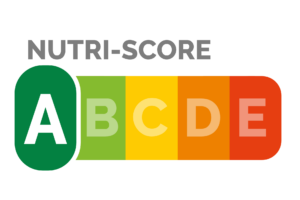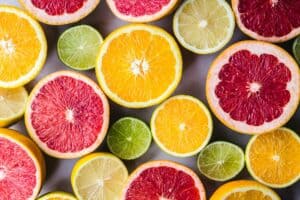Product development • Too much energy in relation to sweetness is one of the many problems with the alternatives to regular sugar that we have looked at so far along our journey into the world of sweetening. The solution is, of course, a sweetener that gives a lot of sweetness but little or no energy. And chemists have managed to produce many of these. In the fourth of six articles on our sweetening journey, it's time for artificial sweeteners.
We are halfway on our journey into the world of sweetening. Along the way, we have looked at alternative sugars, sugar alcohols and other bulk sweeteners. So far, we have not found any good alternative to sugar. It is time to realise that the solution is not found in sweeteners with about the same sweetness and volume as sugar. We must change the direction of our journey and enter the territory of the high-intensity sweeteners. The first stop will be with the artificial ones.
High-intensity sweeteners
Sugars, sugar alcohols and highly processed bulk sweeteners are nutritive sweeteners. The fact that they provide energy is the source of the problems we have with them.
Actually, the energy itself isn’t a problem. The crux is that nutritive sweeteners contain too much energy in relation to their sweetness.
What we need are sweeteners that contribute no or negligible energy relative to the desired sweetness. Such sweeteners are called a non-nutritive sweetener.
Non-nutritive sweeteners are also called high-intensity sweeteners (HIS) as their sweetness is perceived as much more intense than the sweetness of the same amount of regular sugar.
Artificial sweeteners
The most well-known and researched group of high-intensity sweeteners are synthetically produced, called artificial sweeteners. They are entirely human-made, and have no counterpart in nature, and yet they are quite (in)famous to most consumers.
Acesulfame K (E 950), also called acesulfame potassium or Ace K, is 130–200 times sweeter than regular sugar. It is produced from acetoacetate and potassium. Acesulfame K also works as a flavour enhancer and is used, among other things, to enhance the sweetness in aspartame, cyclamate and sucralose.
Aspartame (E 951) is about 200 times sweeter than regular sugar. It is produced from the naturally occurring amino acids, aspartic acid, and phenylalanine. Foods that contain aspartame must state that it ‘contains a source of phenylalanine’.
Cyclamates (E 952) is the collective name for calcium cyclamate, potassium cyclamate and sodium cyclamate, which are about 30 times sweeter than regular sugar. These are salts produced from cyclamic acid, which in turn is produced through a reaction between cyclohexylamine and chlorosulphonic acid.
Saccharine (E 954) is the collective name for sodium saccharinate and potassium saccharinate, which is about 400 times sweeter than regular sugar. It’s sodium- or potassium salts from o-benzoic sulfimide. Saccharine has a metallic and bitter aftertaste, which is often masked by other sweeteners.
Sucralose (E 955), also called trichlorogalactosucrose, is 500–600 times sweeter than regular sugar. It is produced from regular sugar by exchanging three oxygen-hydrogen pairs for chlorine atoms.
Neohesperidine DC (E 959), also called neohesperidine dihydrochalcone, often abbreviated to NHDC, is 3,000 times sweeter than regular sugar. It is produced chemically from the bitter substance neohesperidine present in citrus fruits. It’s rarely used as the only sweetener; its sweetness only comes through after a few seconds and gives an aftertaste of menthol and liquorice.
Neotame (E 961) is 7,000–13,000 times sweeter than regular sugar. It is produced synthetically through a chemical reaction between aspartame and other chemical substances.
Aspartame-acesulfame salt (E 962) is about 350 times sweeter than regular sugar. It is a salt consisting of acesulfame K (E 950) and aspartame (E 951) with the potassium removed. In the body, it is broken down into acesulfame K and aspartame. Foods that contain aspartame-acesulfame salt must state that it ‘contains a source of phenylalanine’.
Advantame (E 696) is about 20,000 times sweeter than regular sugar. It is produced synthetically from isovanillin and aspartame (E 951).
| Artificial sweetener | Sweetness | GI | Energy |
| Acesulfame K (E 950) | 130–200 × | 0 | 0 kcal/g |
| Aspartame (E951) | 200 × | 0 | 0 kcal/g* |
| Cyclamates (E952) | 30 × | 0 | 0 kcal/g |
| Saccharine (E954) | 400 × | 0 | 0 kcal/g |
| Sucralose (E955) | 500–600 × | 0 | 0 kcal/g |
| Neohesperidine DC (E 959) | 3 000 × | 0 | 0 kcal/g |
| Neotame (E 961) | 7 000–13 000 × | 0 | 0 kcal/g |
| Aspartame-acesulfame salt (E 962) | 350 × | 0 | 0 kcal/g |
| Advantame (E 969) | 20 000 × | 0 | 0 kcal/g |
| * Contains energy but contributes in negligible amounts due to the small amount needed to give sweetness. | |||
Not that great
The artificial sweeteners we have come across above are evaluated by the European Food Safety Authority (EFSA) to be safe enough to be used in food and beverages. But there are questions raised here and there:
- Cyclamates were banned in the US in 1969 as they were suspected of having cancerogenic effects.
- Saccharine is banned in several countries as it is suspected to be poisonous.
- Sucralose is an organochlorine compound which mainly passes through the body, through wastewater treatment plants into nature where it degrades very slowly.
- Aspartame is broken down in the body to, among others, phenylalanine, which in turn breaks down to tyrosine in most people. But in people born with the congenital disease phenylketonuria, phenylalanine is not broken down but remains in the blood, increasing to levels that cause brain damage.
- Aspartame-acesulfame salt contains aspartame and is therefore also a source of phenylalanine.
In addition to these issues, there are many alarm reports and statements, often lacking in evidence, nevertheless circulating in the general consciousness, that are picked up from time to time by newspapers and popular magazines and presented with flaming headlines.
These issues, together with a general aversion to eating chemically produced substances, make artificial sweeteners a bad choice for food and beverage companies who want to be seen as environmentally conscious and caring about their consumers’ health.
So, what options are left…?
In the next chapter, our journey into the world of sweetening continues further into the territory of the high-intensity sweeteners. We will cover sweeteners with their roots in nature.
Please, share this article if you liked it.
[et_social_share]





